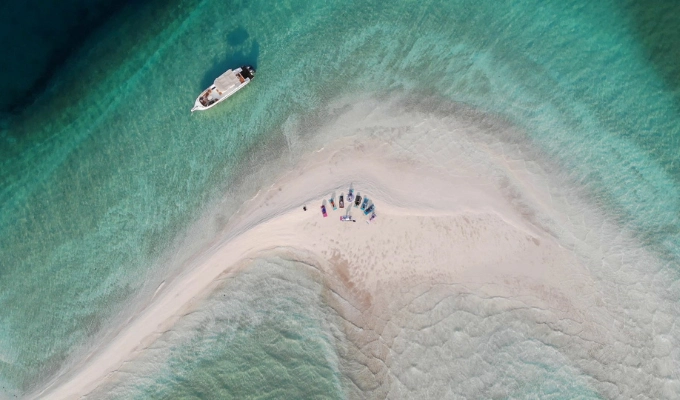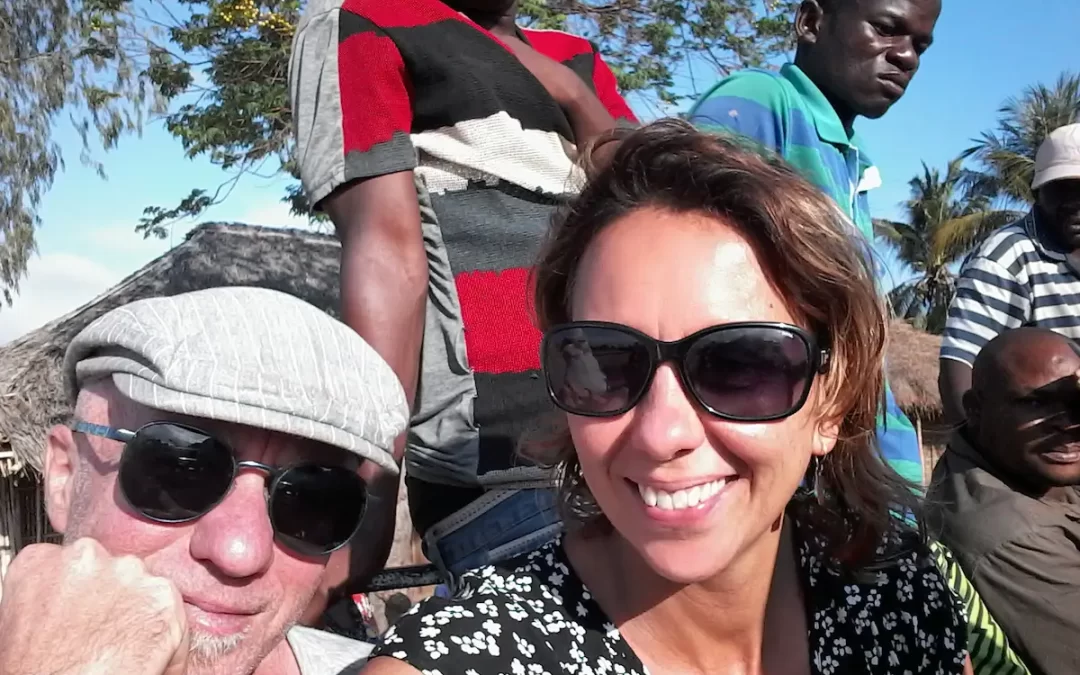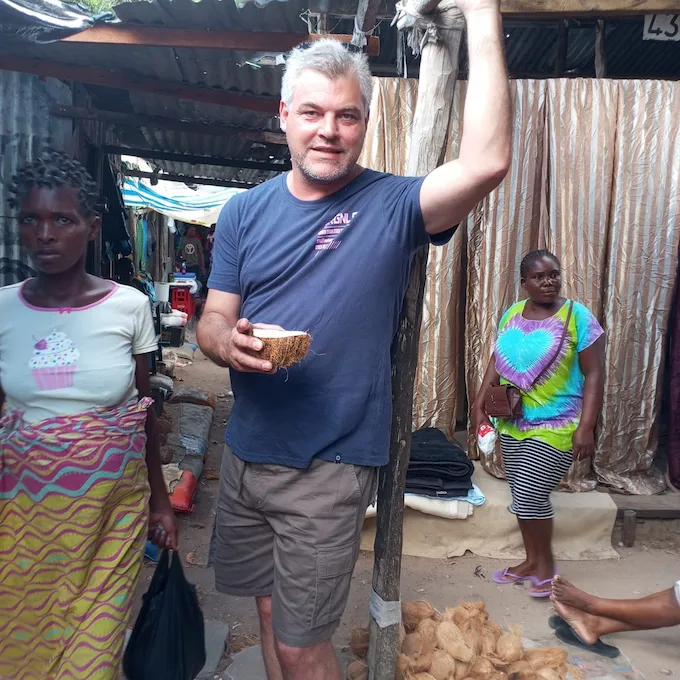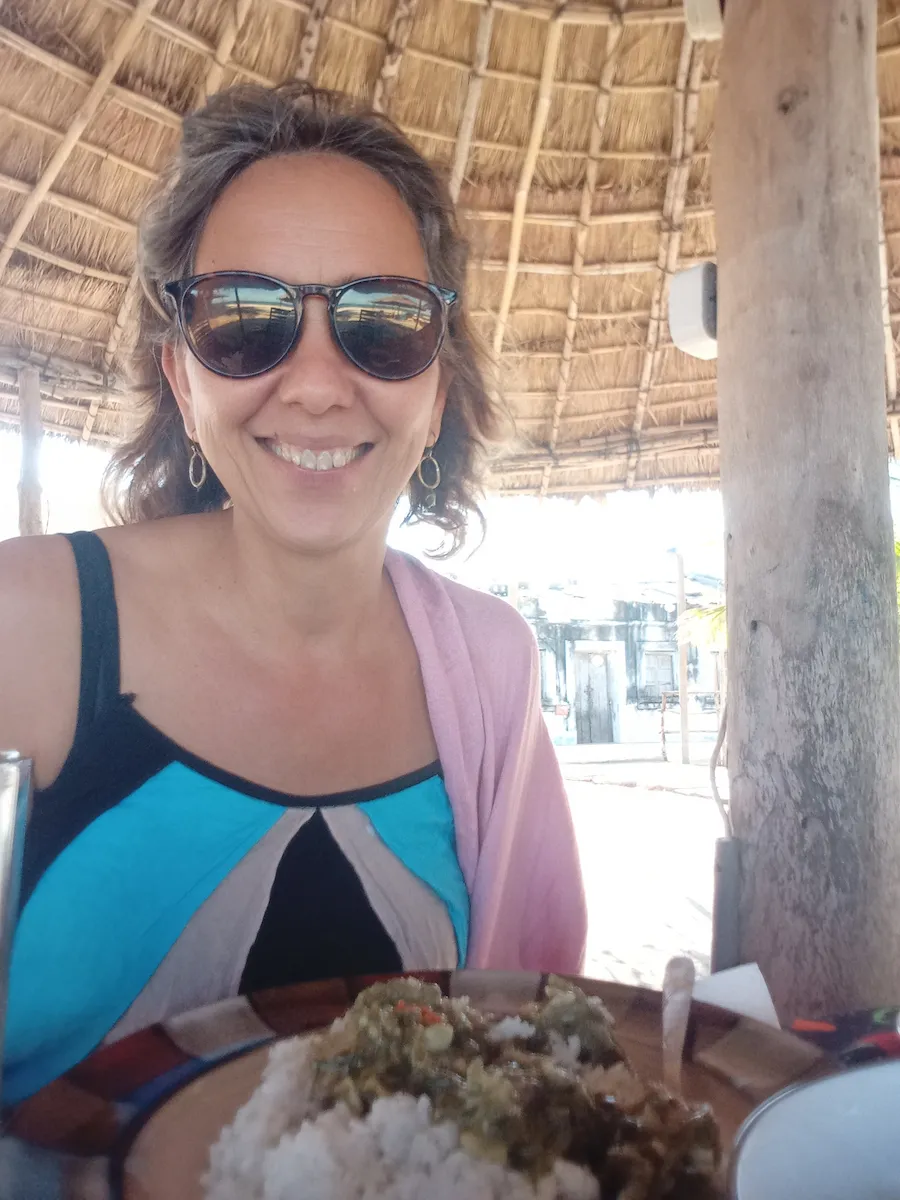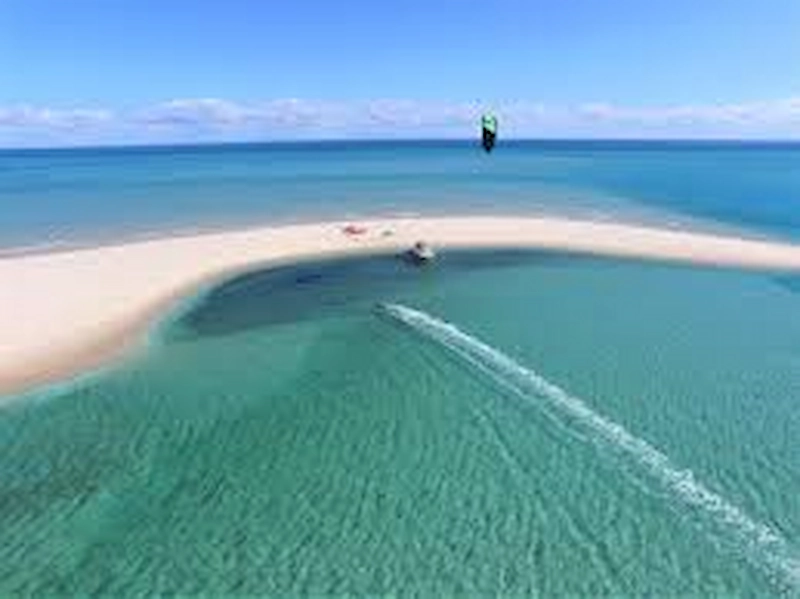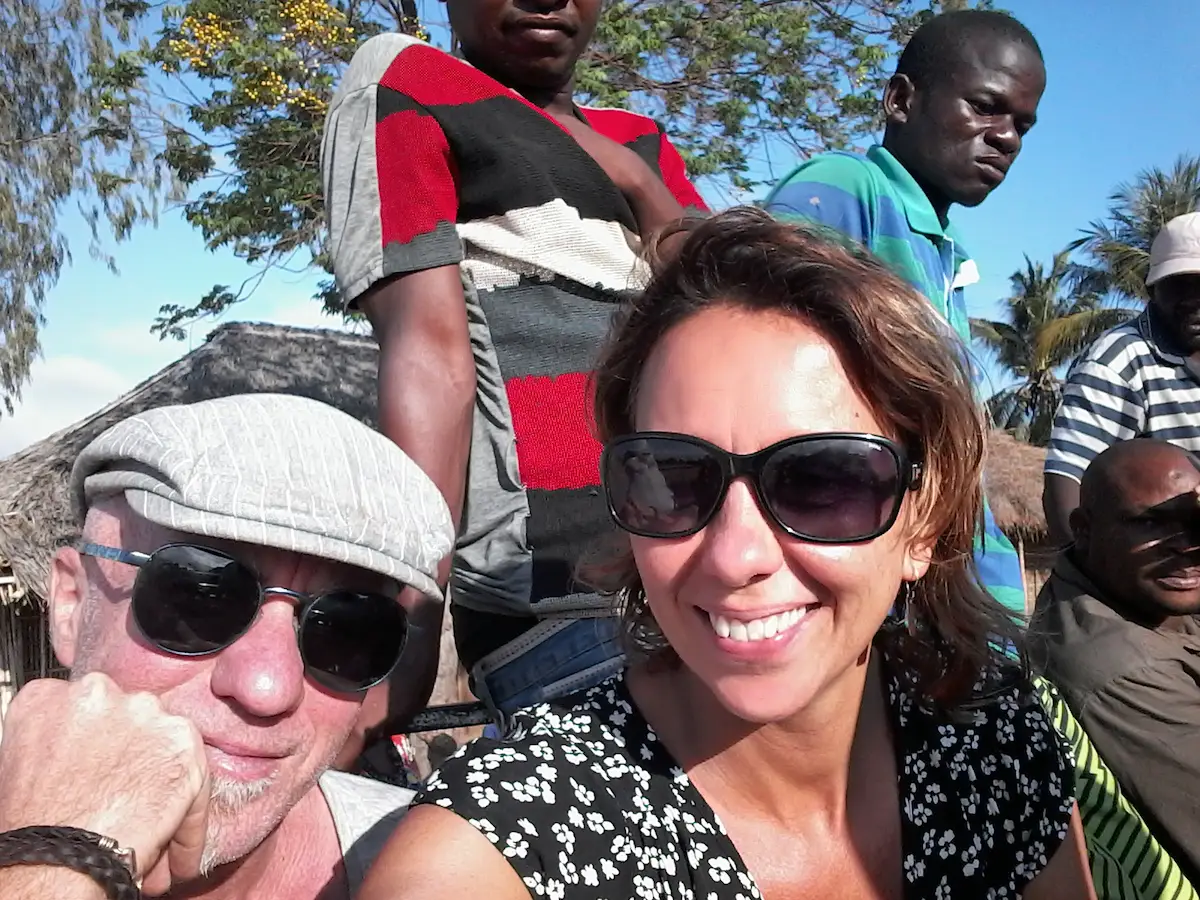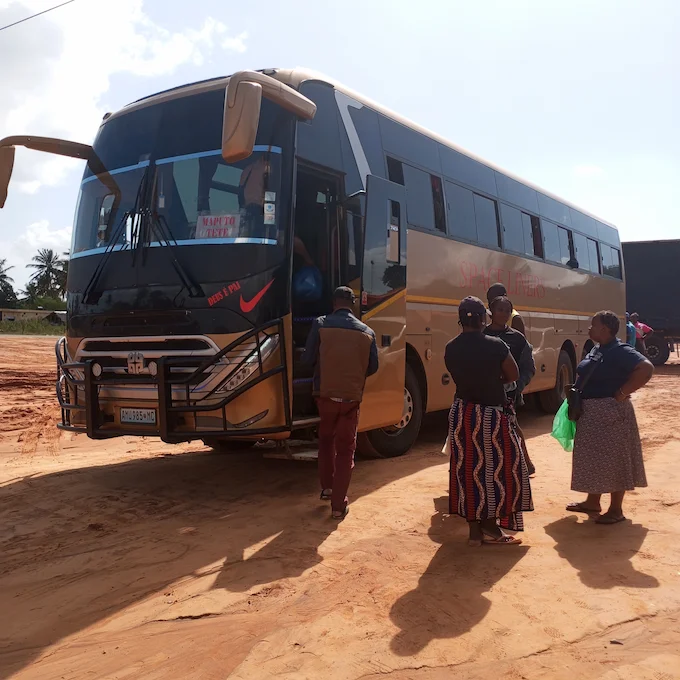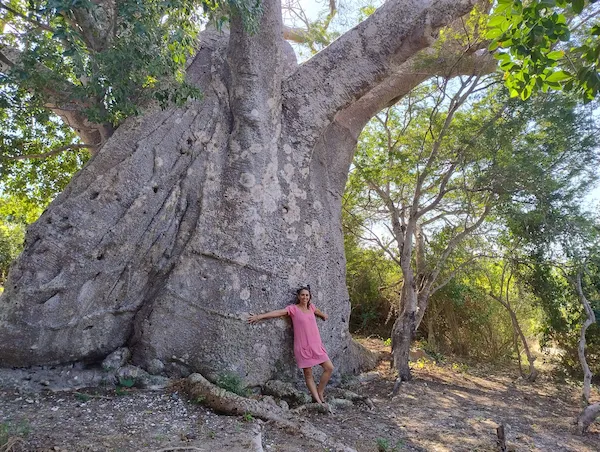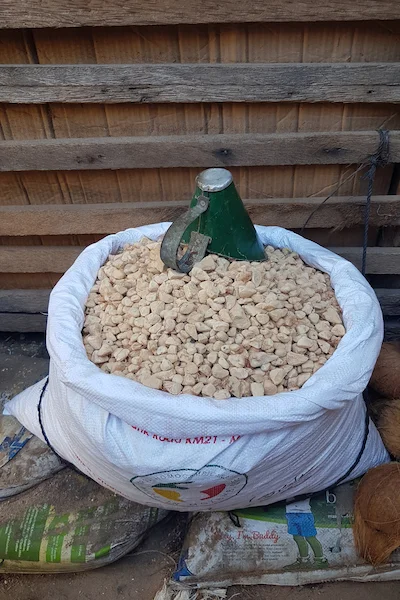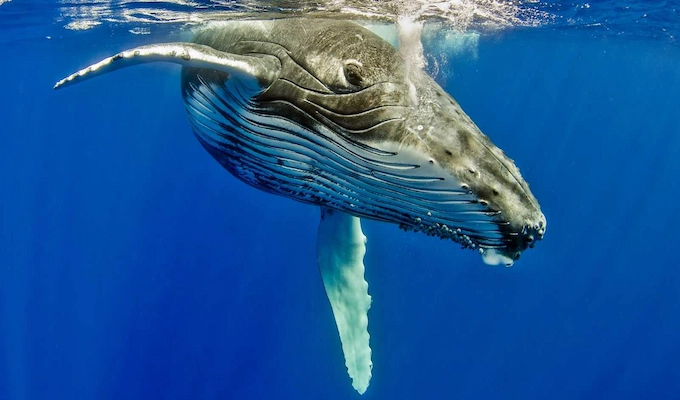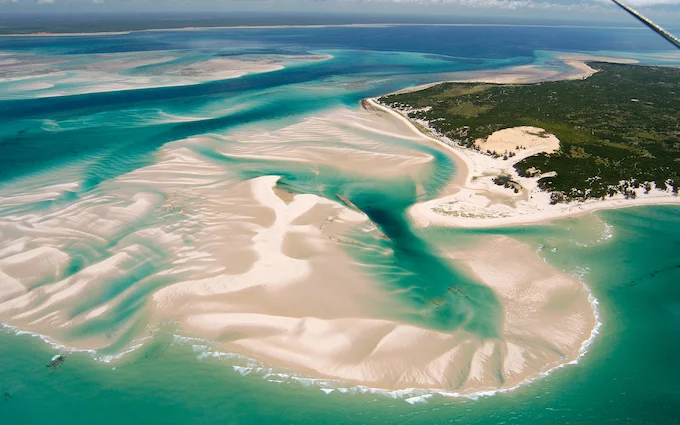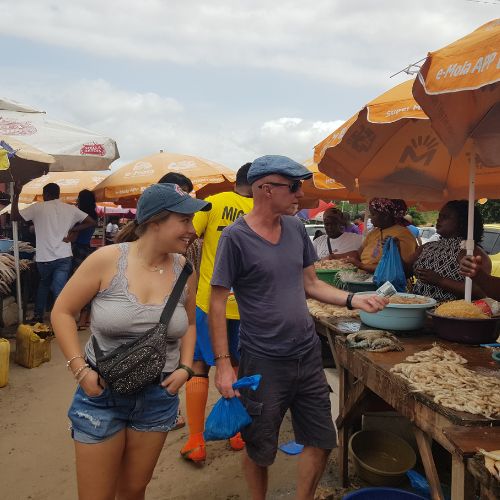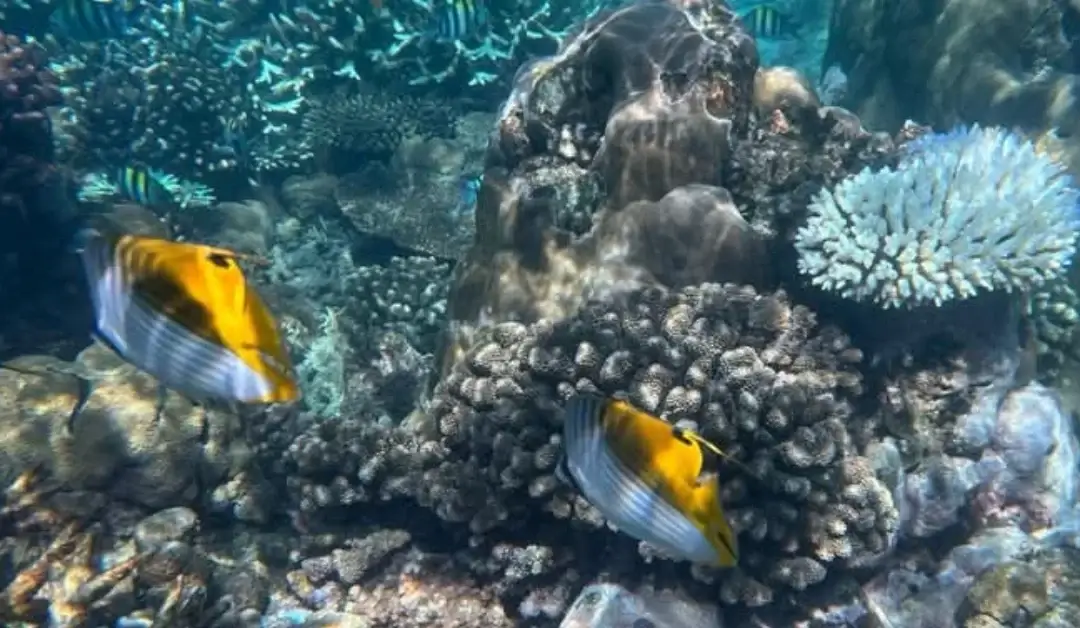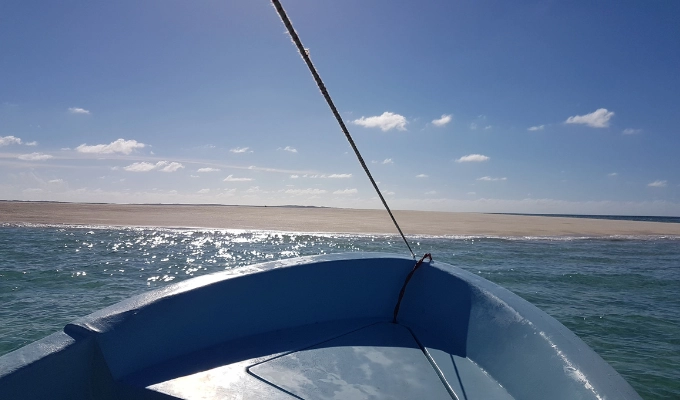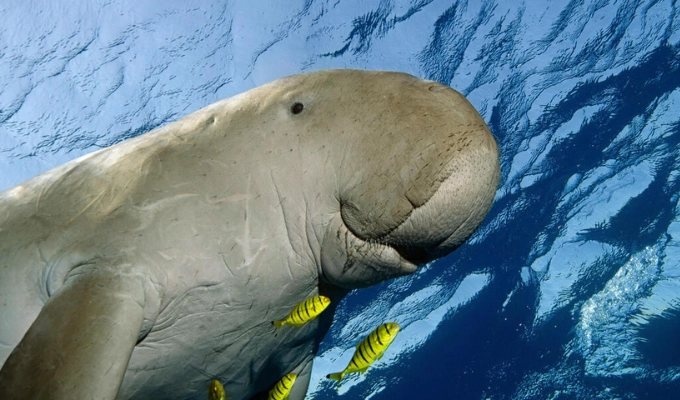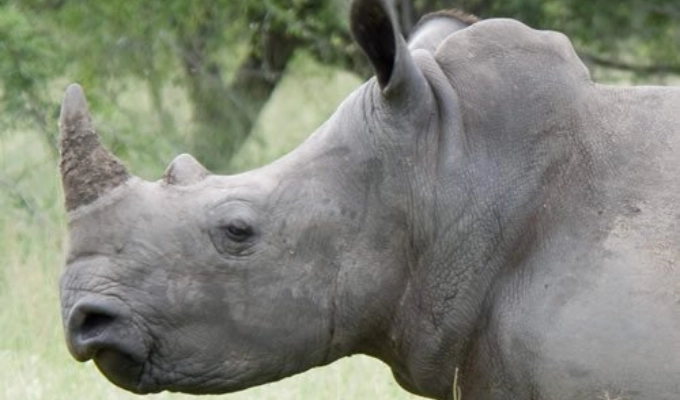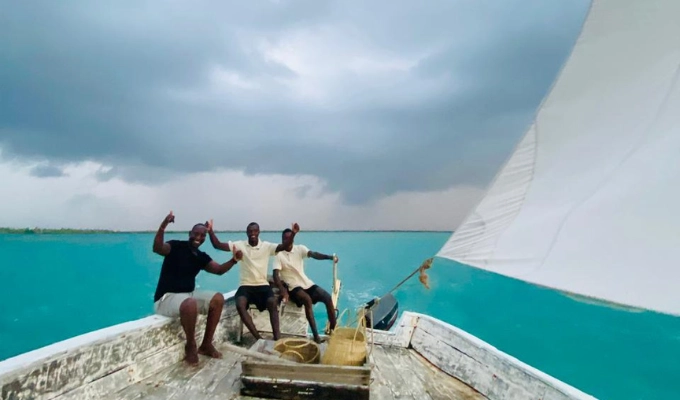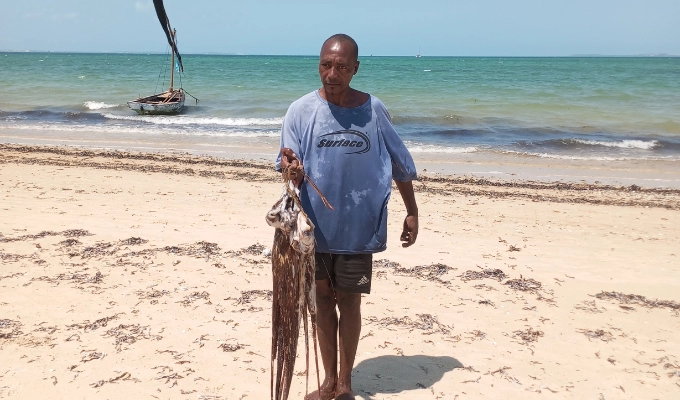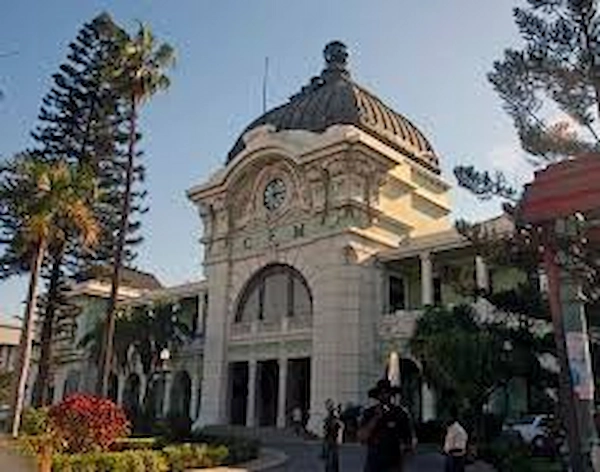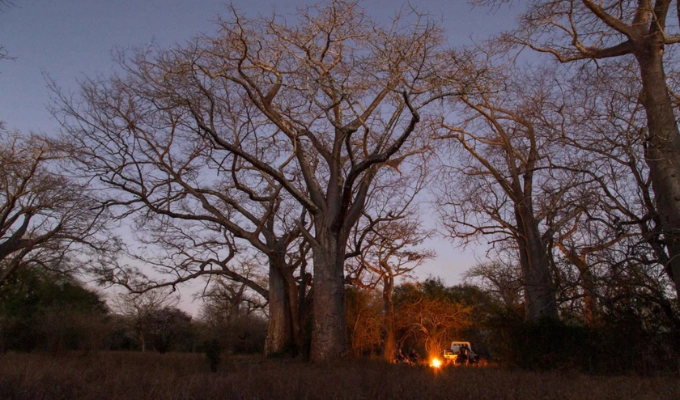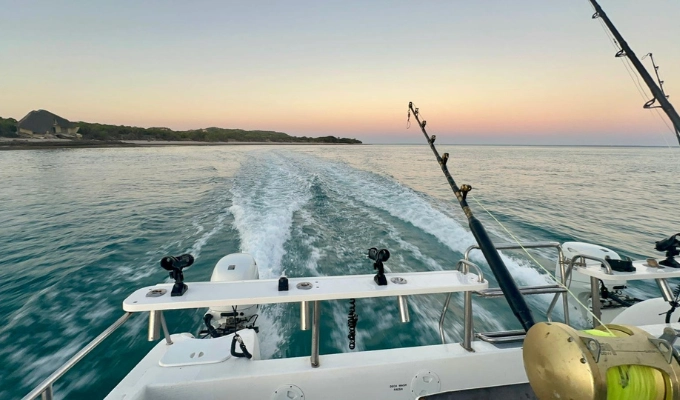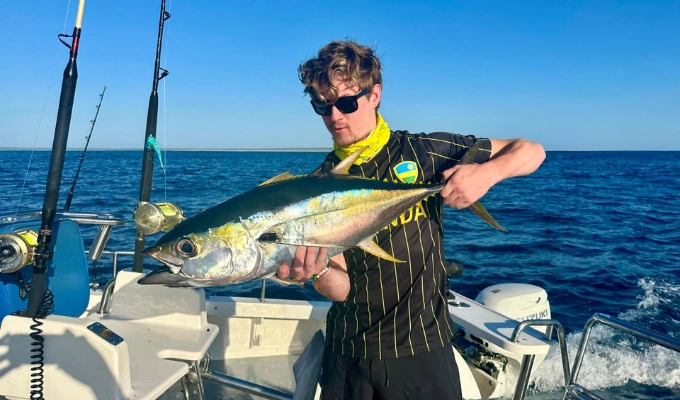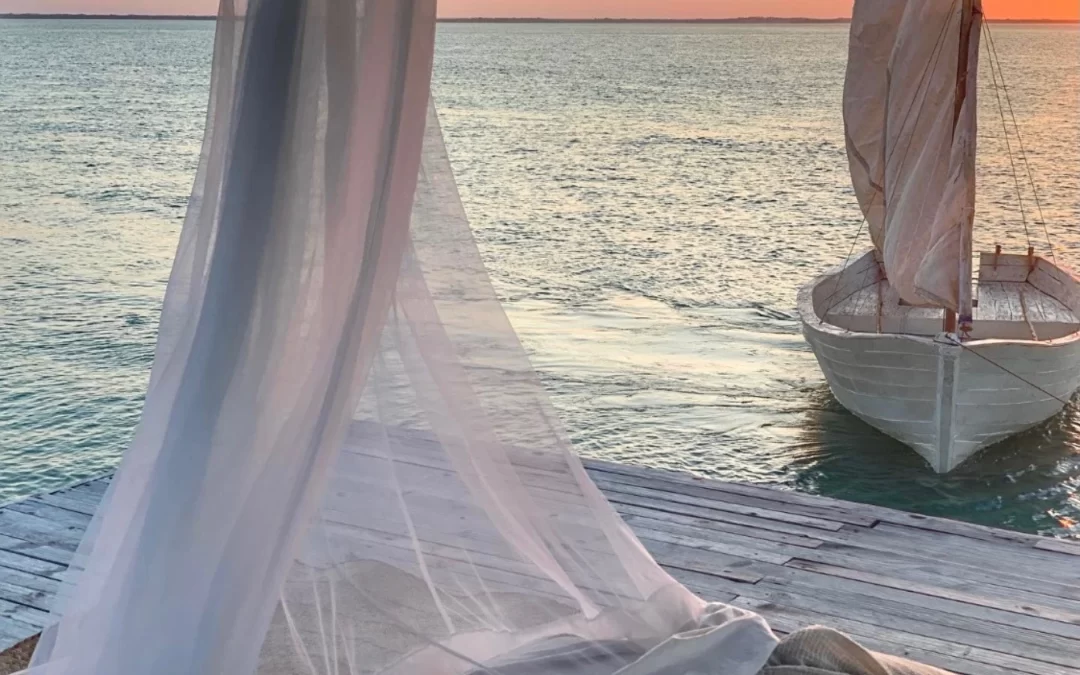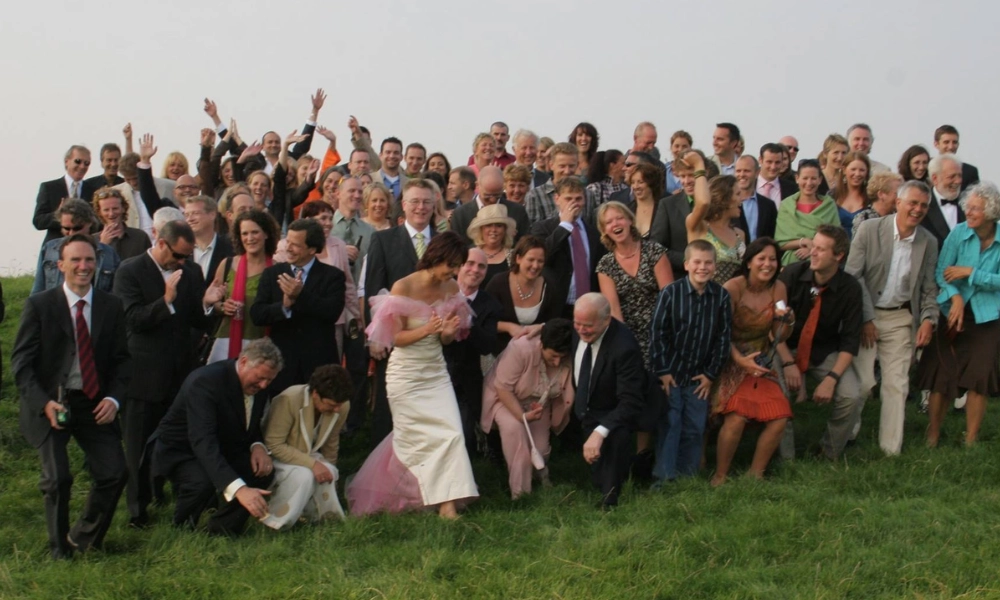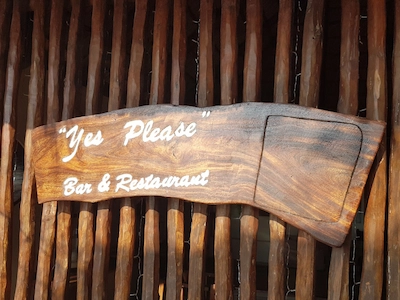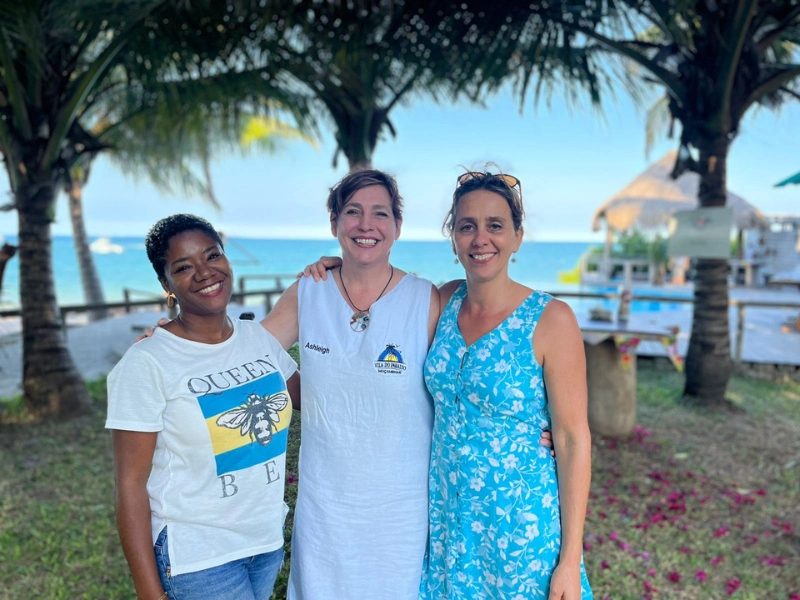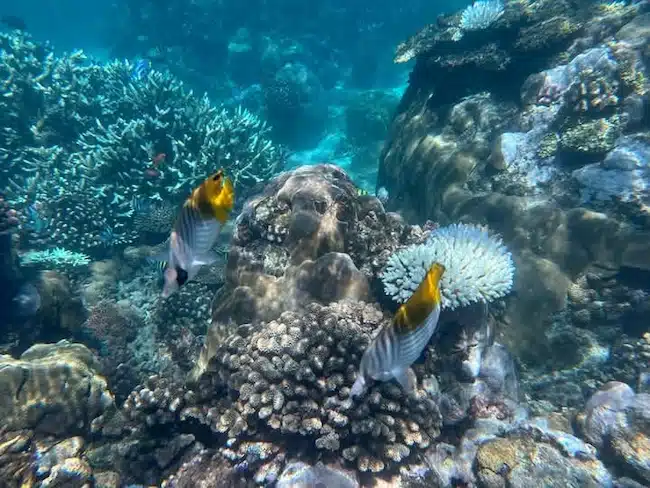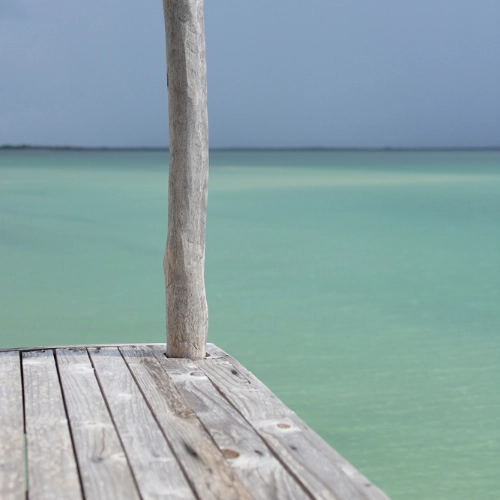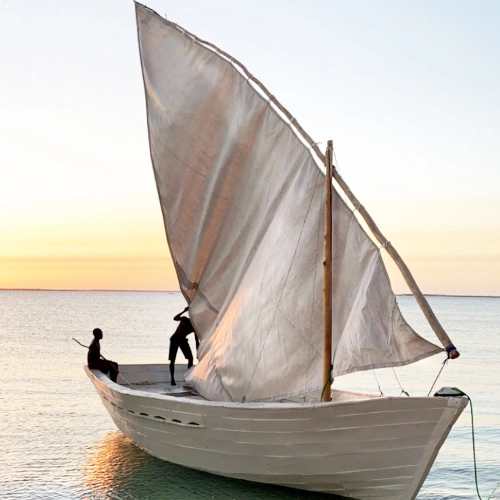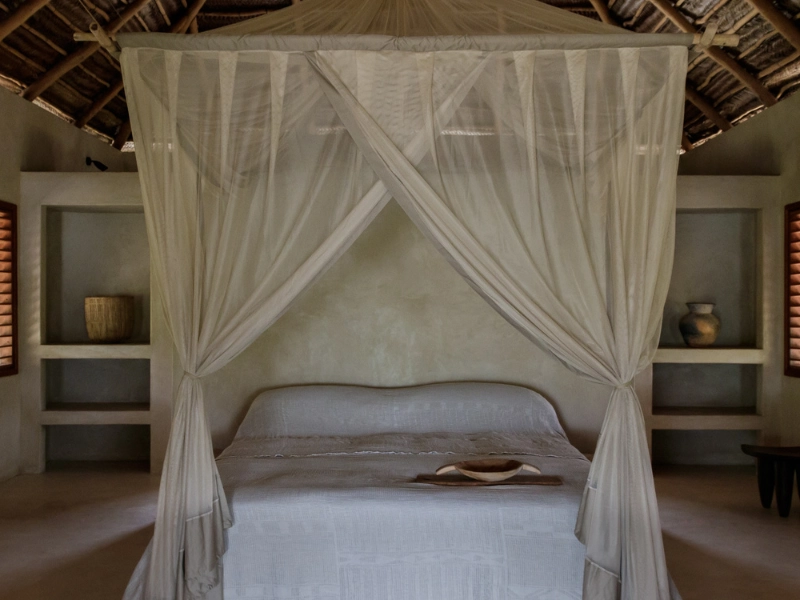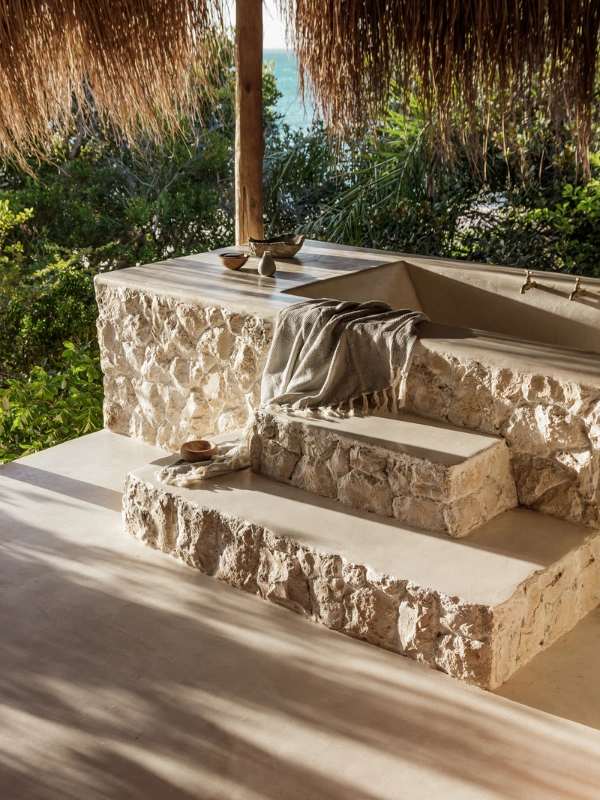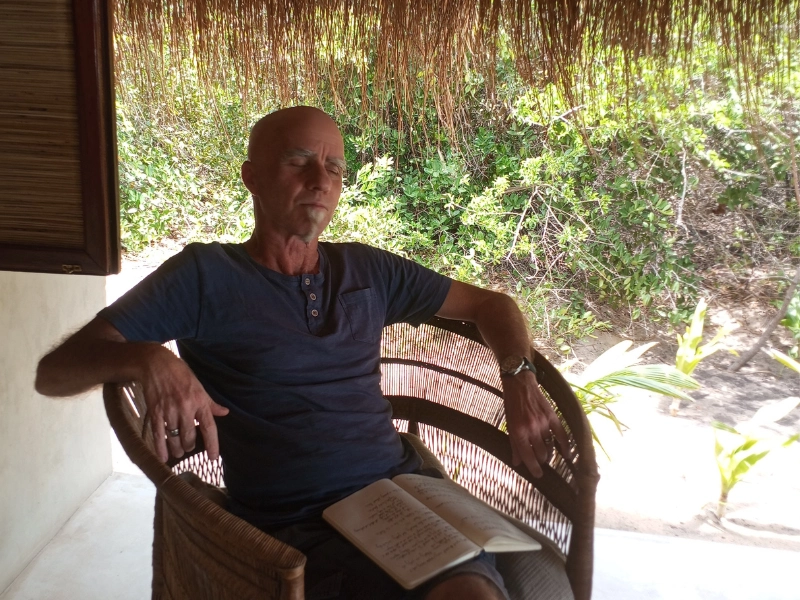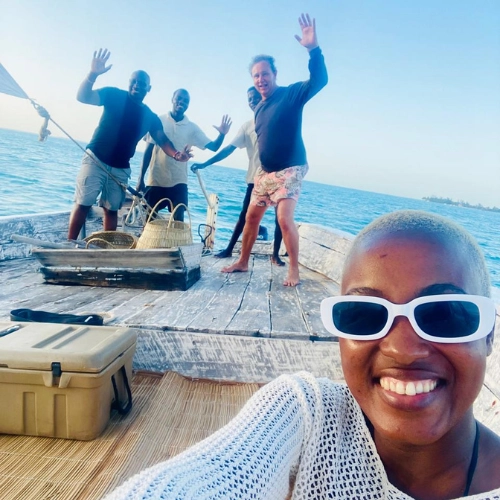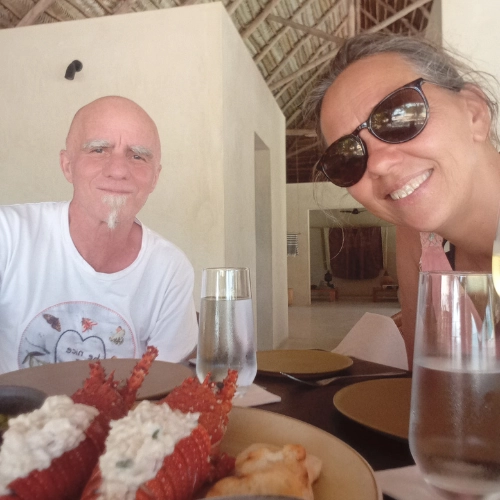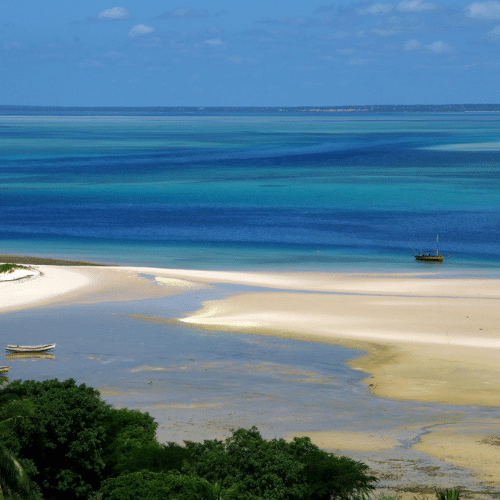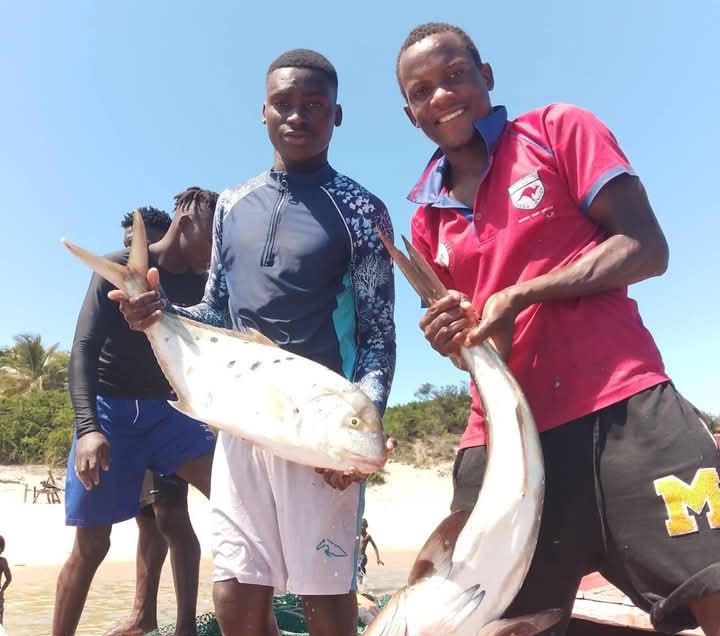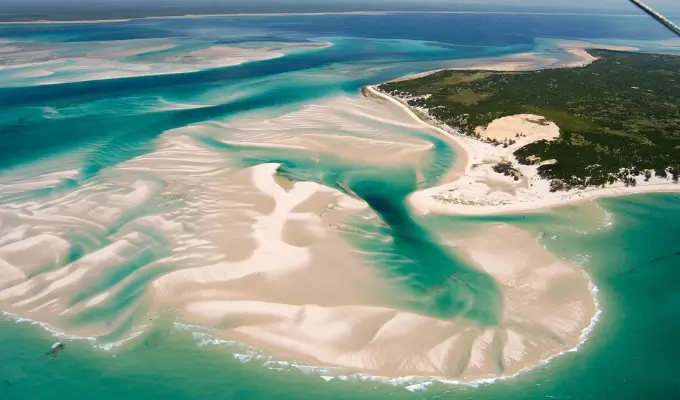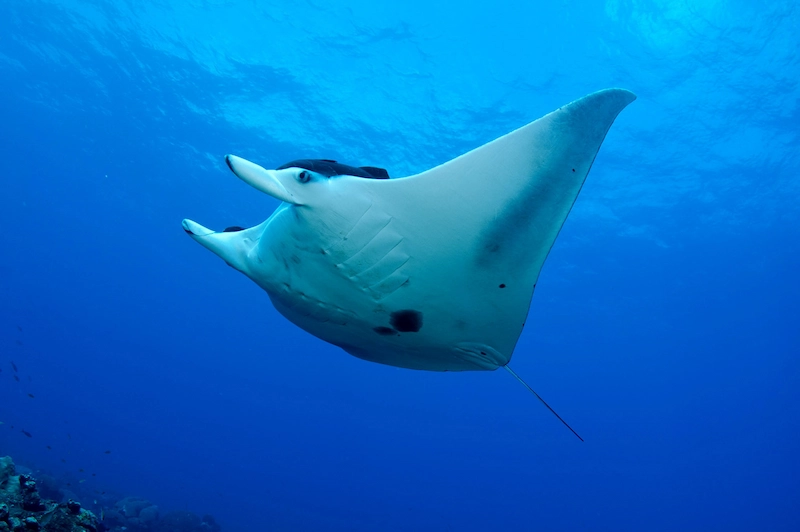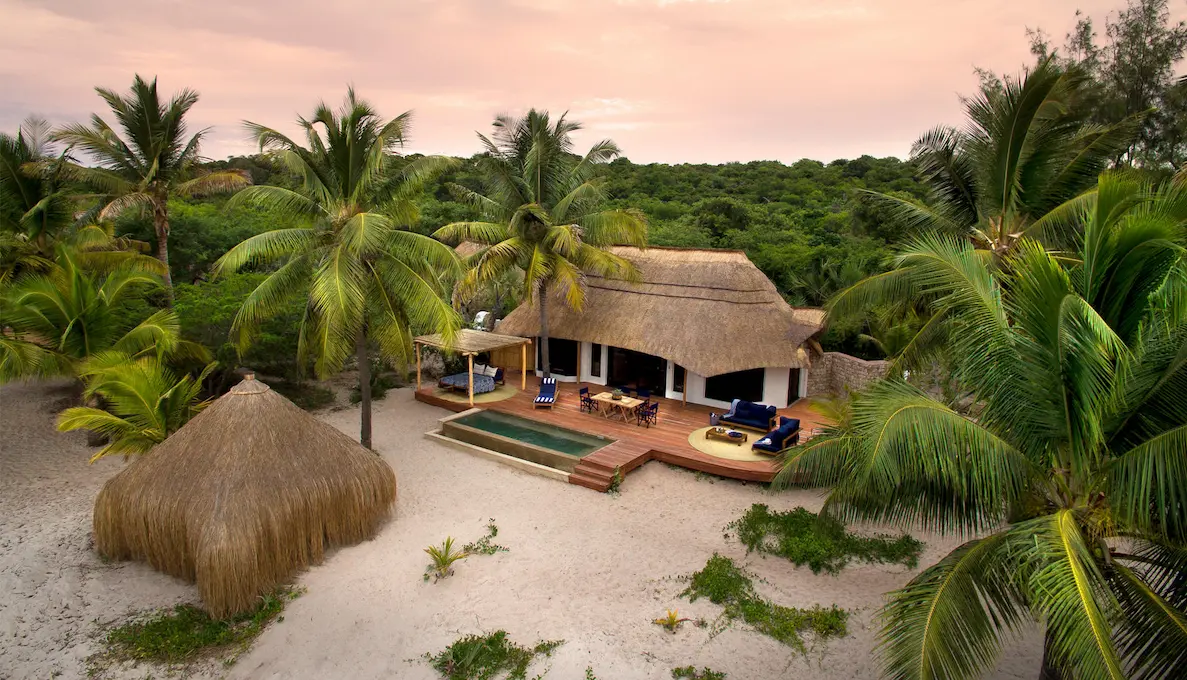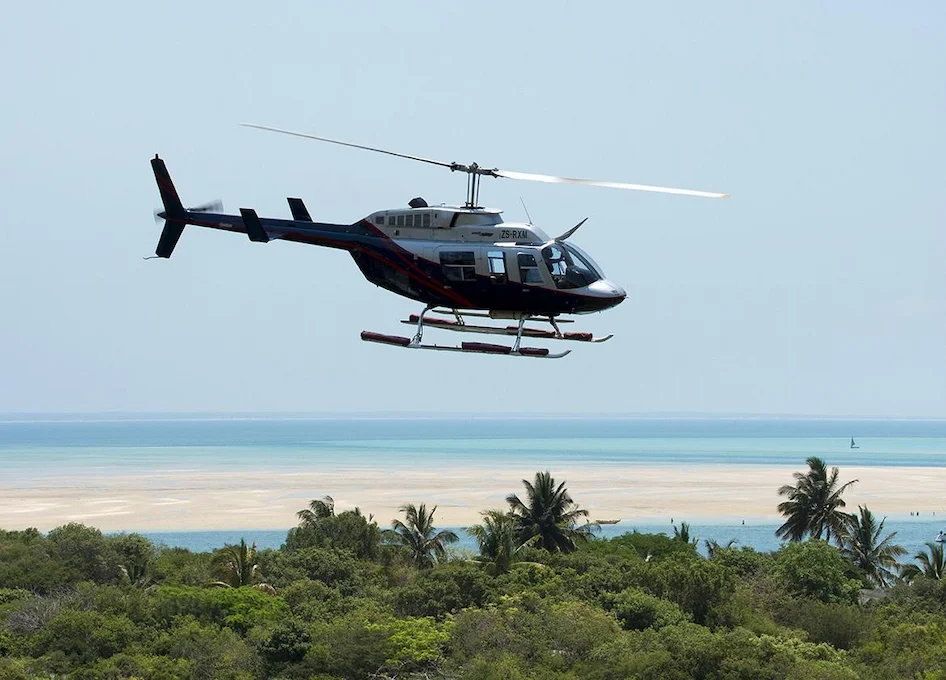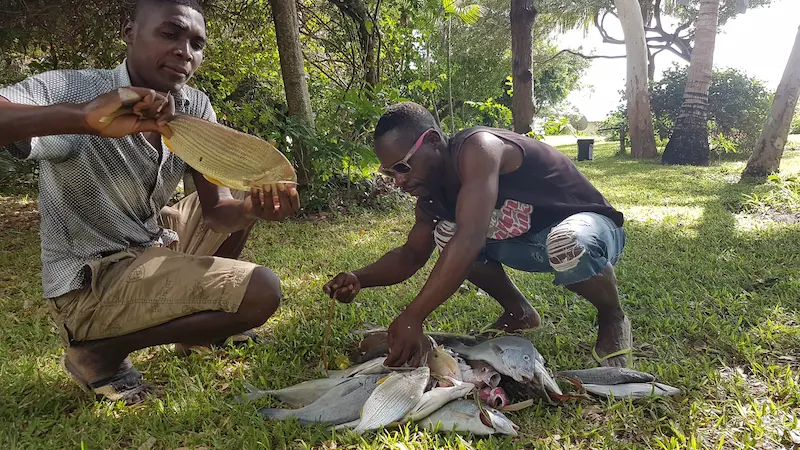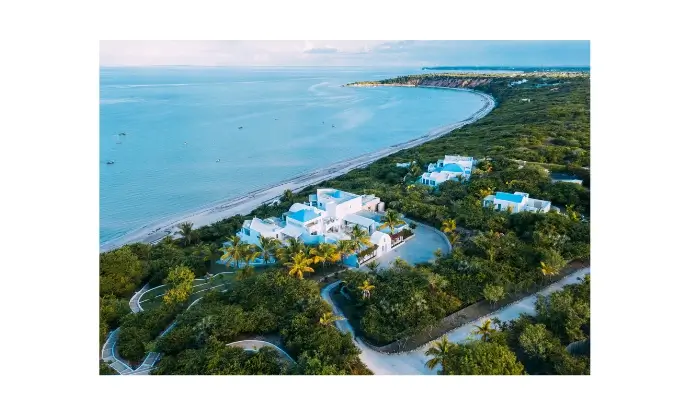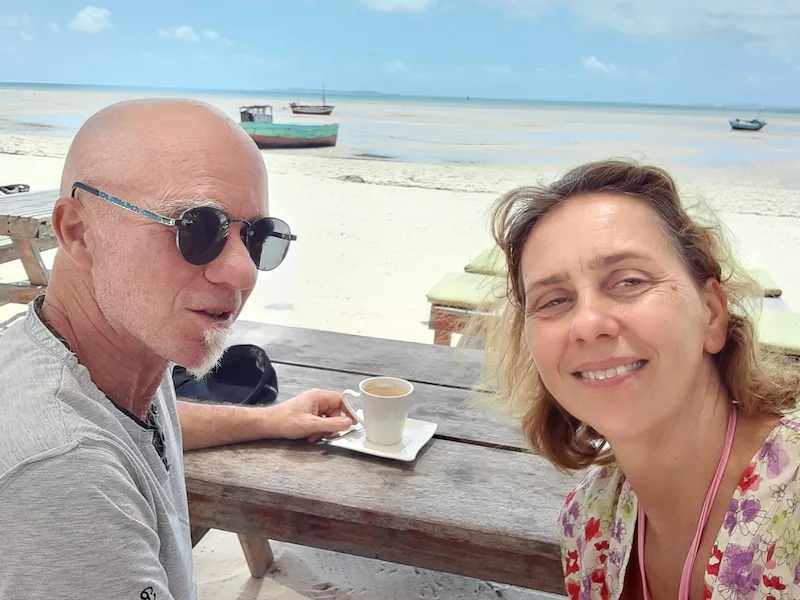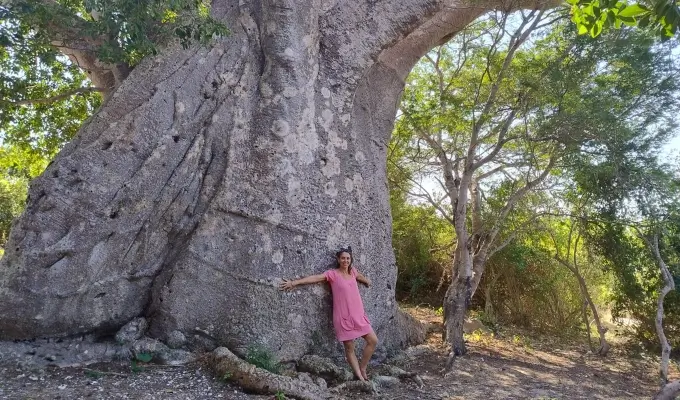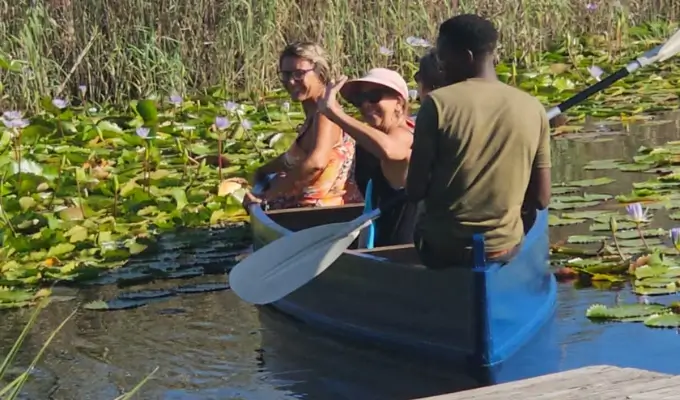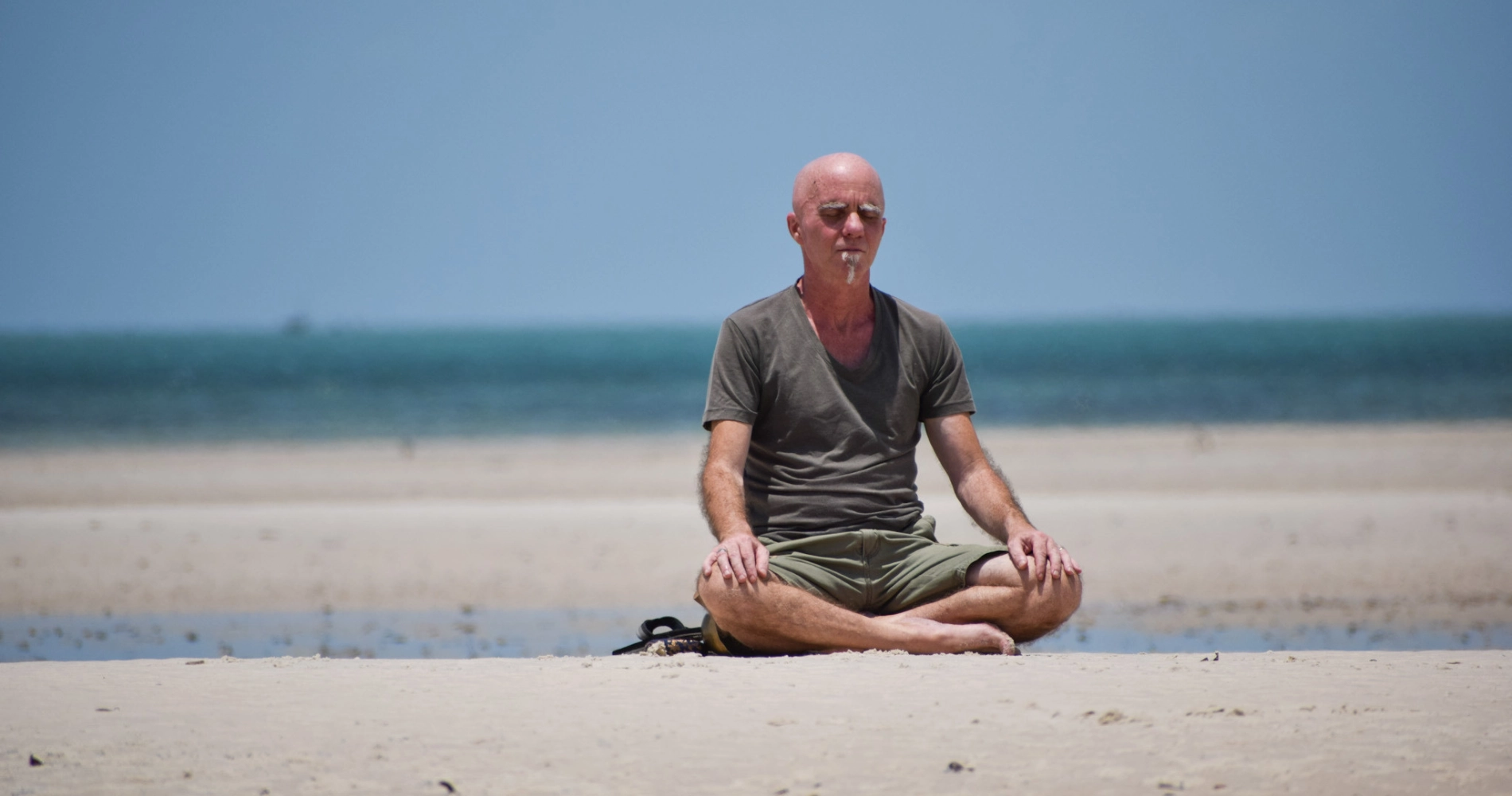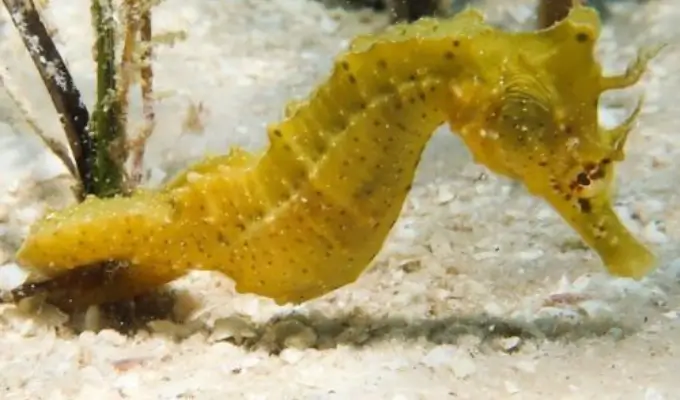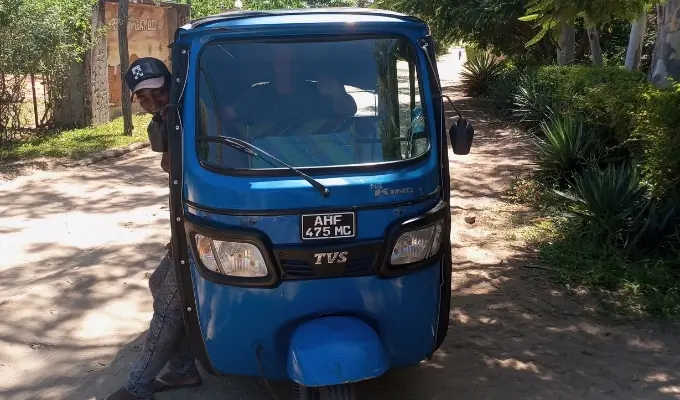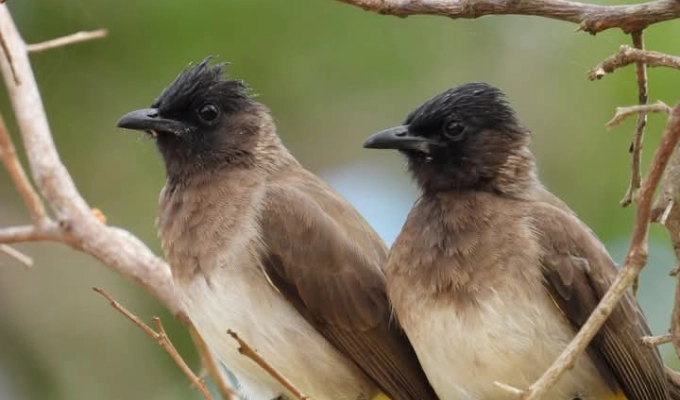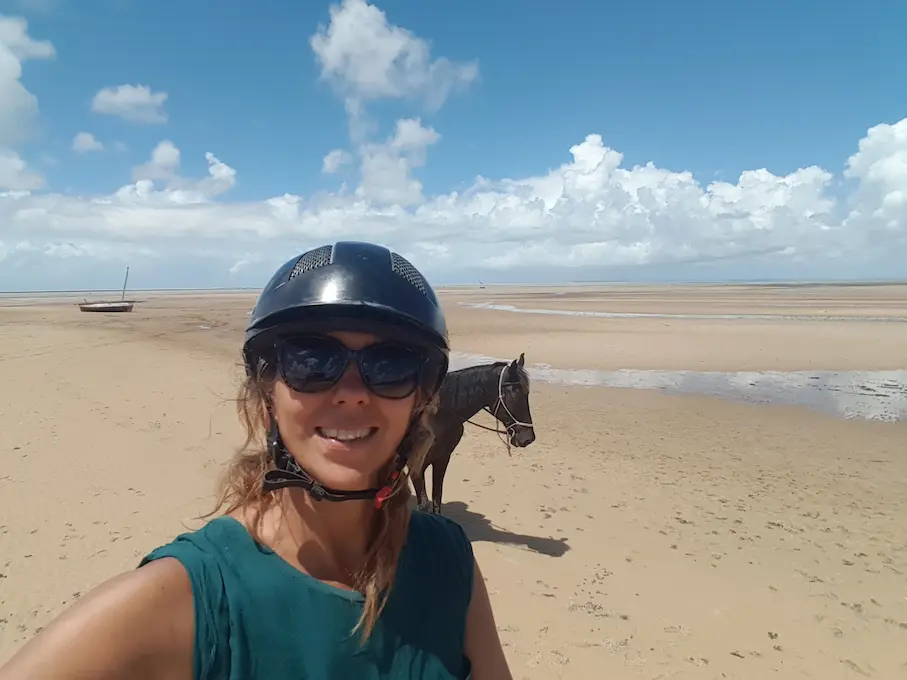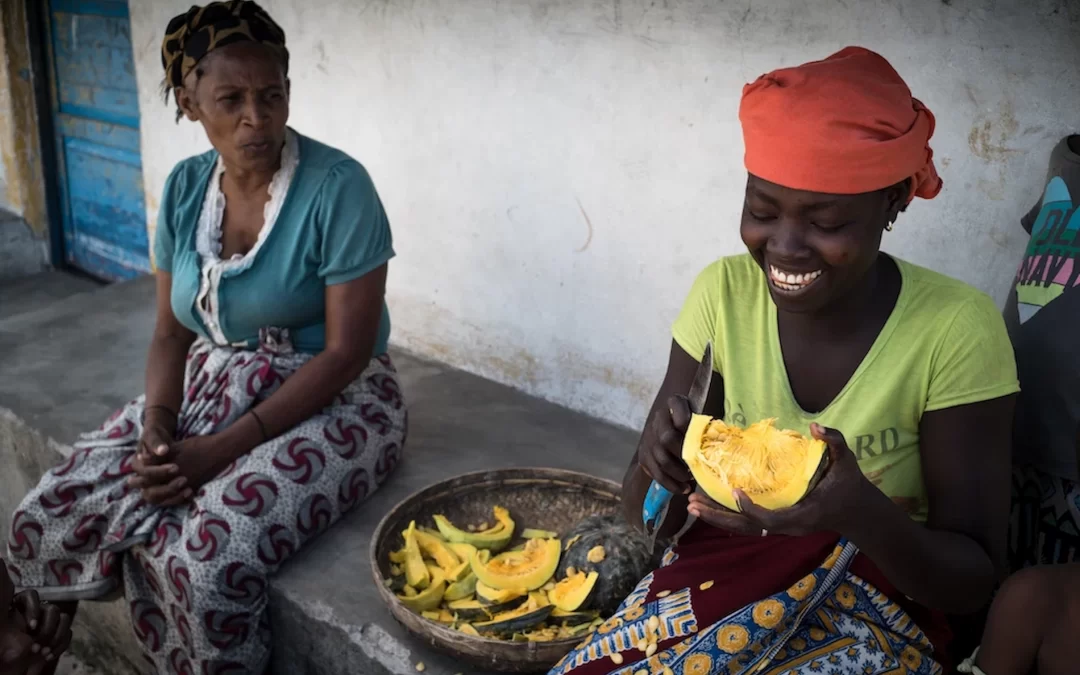
The Best Off-grid Authentic Homestay & Local Cuisine in Mozambique Africa
A Local Homestay in Mozambique
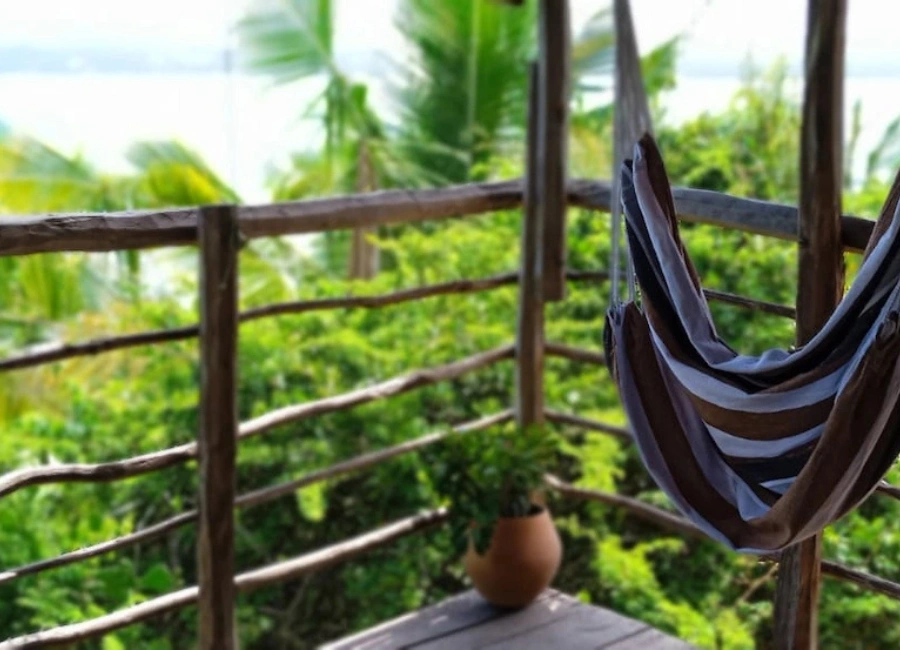
The clouds are slowly drifting by and the bird of prey is circling to spot its next meal. Birds are chirping around me, cows mooing in the distance, and I am ringed by a calm saltwater lake.
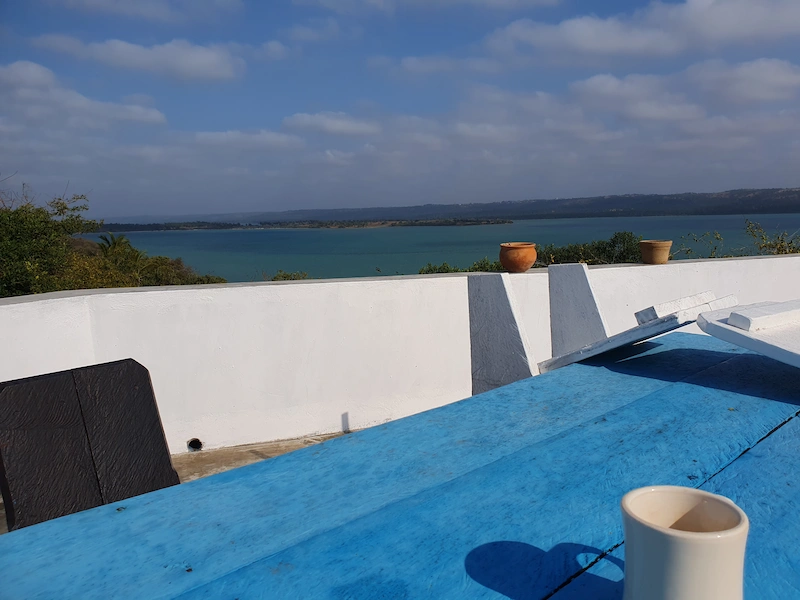
Lying on my back, I look up to the sky. It takes me back to my childhood in Friesland where I grew up, jumping over ditches in the summer and skating in the winter, canoeing past meadows with curious black and white Frisian cows, swimming in the lake, looking after my Shetland pony and my rabbits. I loved being outside as a child, having an untroubled childhood in a small village with a large garden and a sense of freedom, something I think I inherited mainly from my father. We quickly learned to swim and went out on our own in boats and canoes, catching frogs, teasing ducks, picnicking on the shore and picking blackberries in the summer.
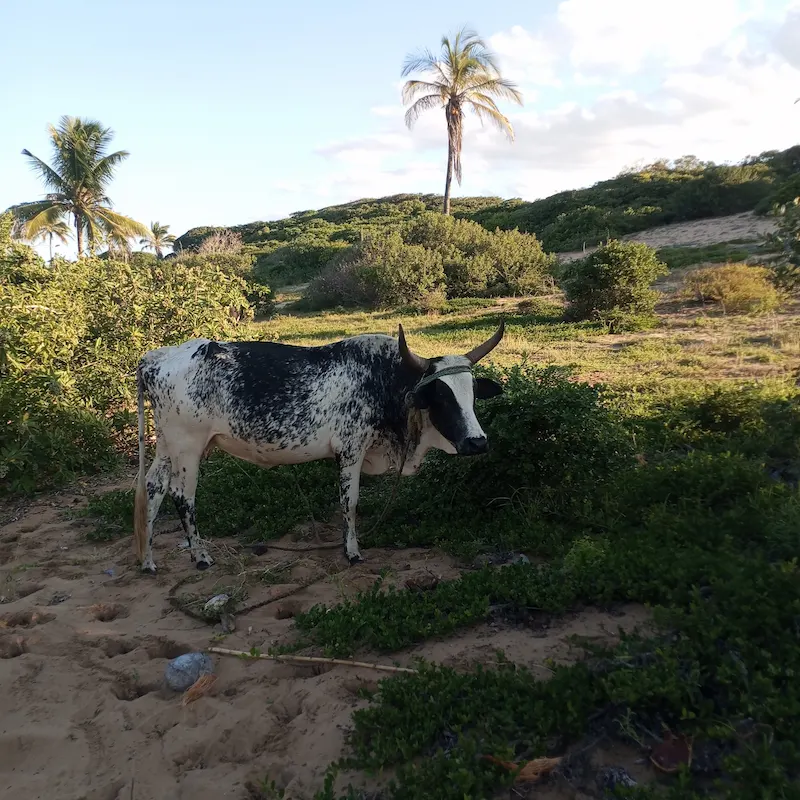
In the middle of the African bush
I have been housesitting and hosting guests for a few weeks at the homestay of a Dutch friend and his Mozambican wife. Here in the middle of the African bush and nature, sandwiched between the Indian Ocean and the saltwater lakes of Zavala in Mozambique, Diederik and his wife Arcenia have created a true little paradise.
With the mooing cows, sweeping views, and vast skies, I daydream my way back to Friesland. But this is Africa, and I am startled by a group of curious monkeys staring at me in amazement. Likewise, I am surprised that they haven’t yet snatched the piece of chocolate cake from my plate yet.
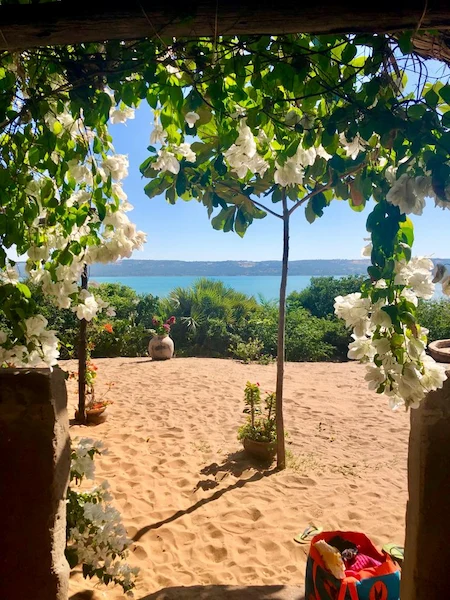
Off-grid and local Mozambican cuisine
Bulbul Homestay, named after the bird of the same name, is completely off-grid. The chalets are built with local materials, water is pumped from the well, and the water for the delightful outdoor shower under the endless starry skies is heated by a wood-fired boiler. A dream for nature lovers. Diederik is the handyman and Arcenia the cook. All the food here is local Mozambican cuisine, prepared with love and care using fruit and vegetables from the local community, fish from the local fishermen, and meat from local farmers. The charming and friendly staff will do everything they can to make you feel at home.
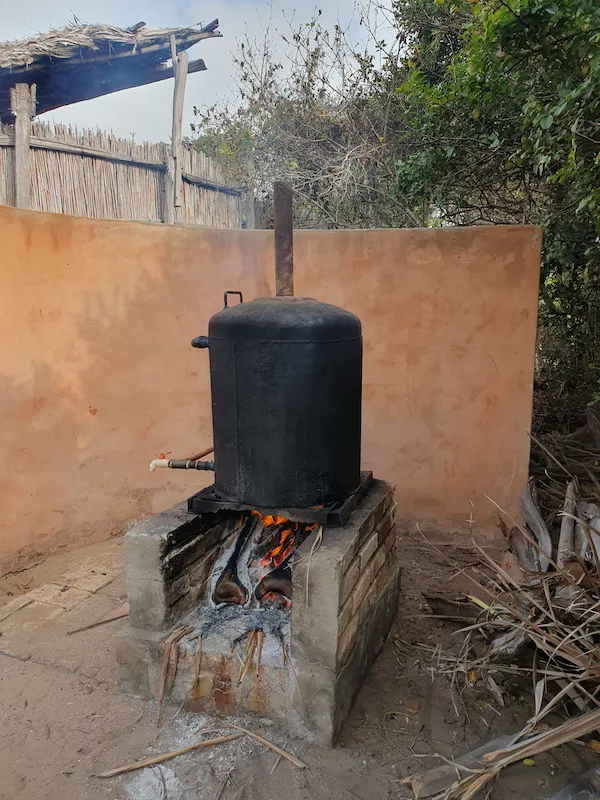
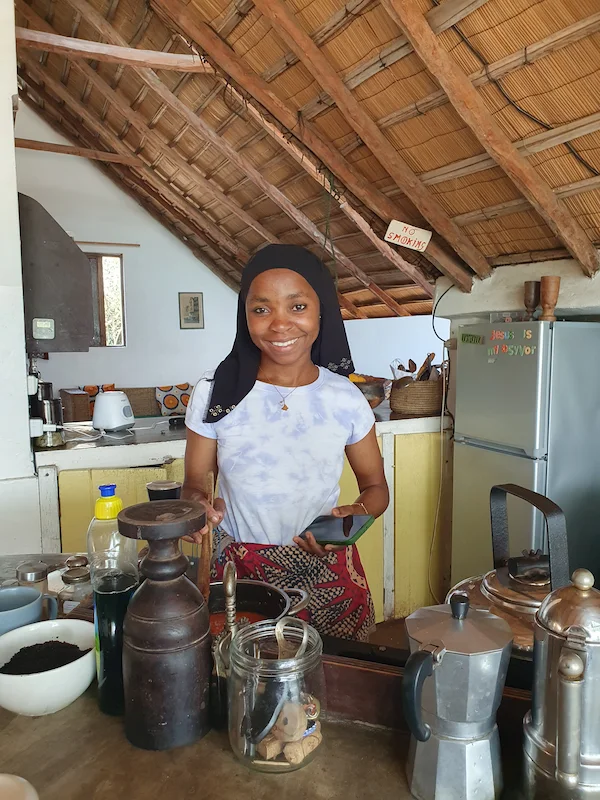
The Rythm of Nature
Life here is determined by the rhythm of nature. In the morning, the sun rises like a big red ball out of the ocean, and at the end of the day, the big red ball sinks into the lake. In the afternoon, when the sun is at its highest and the land sighs under the heat, it is time for siesta and rest. After sunset, the temperature drops quickly, and the nights are pleasantly cool. Here, no need for air conditioning. That’s not possible anyway, because, as mentioned, the place is completely dependent on solar energy.
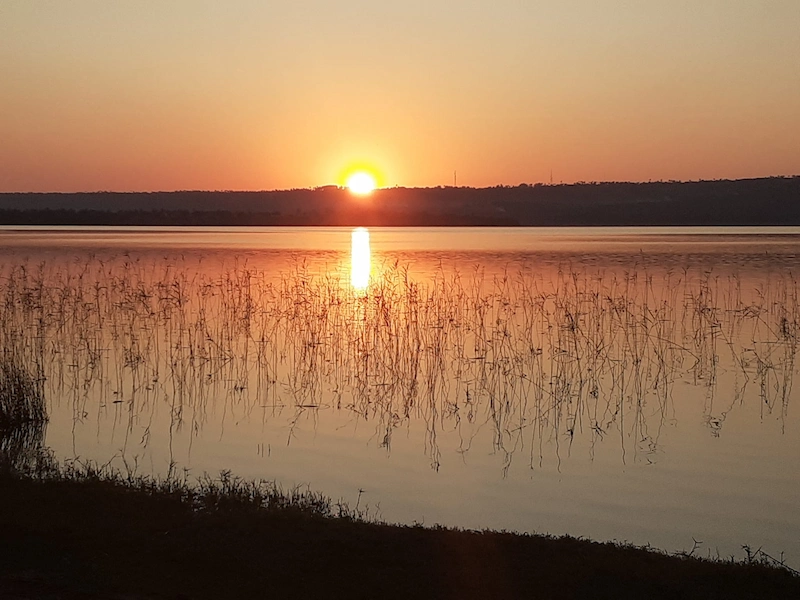
Amsterdam in Mozambique
We met Diederik and Arcenia when we first moved to Mozambique. We had bought a car in the capital Maputo and were looking for a place to stay on the way back to Vilanculos. Bulbul Homestay is exactly halfway, so it was a good place to stop for the night. We got talking to Diederik and it turned out that our lives had crossed paths years ago. He lived next door to a good friend of ours in Amsterdam, just around the corner from our own house, where we spent almost every weekend when we lived in Amsterdam. We went to the same places, restaurants, and bars. Diederik turned out to be a similar age as Gerry and shared the same love of music. We shared interests and views. It was a very nice meeting here in Mozambique. A new friendship was born.
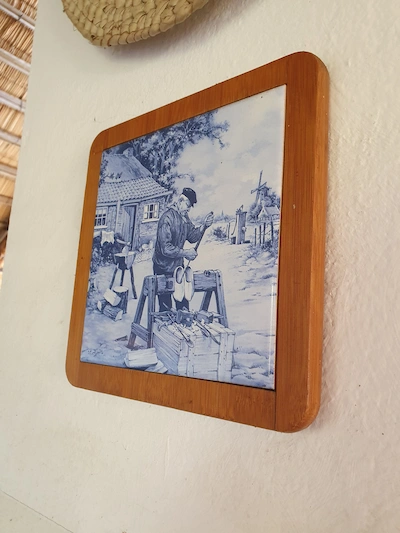
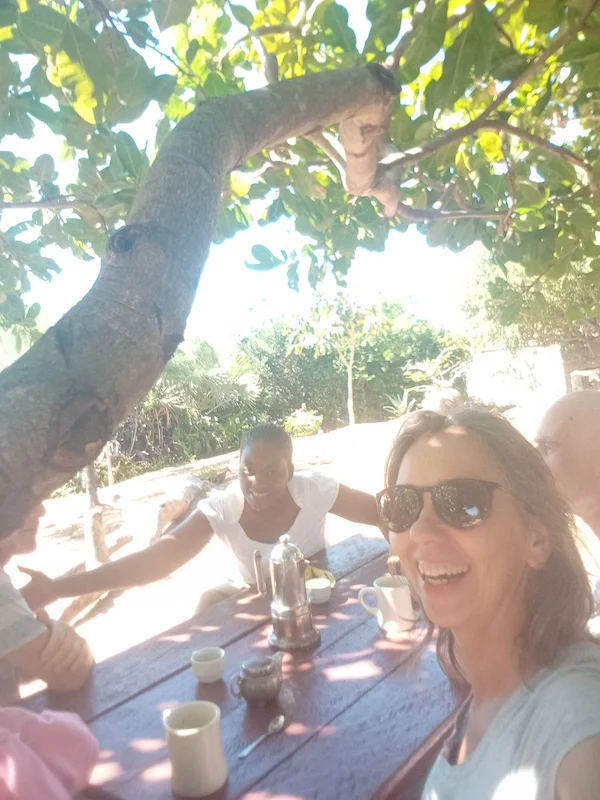
The family lives here with three children, the oldest of whom is now studying in Maputo. They live here surrounded by nature, amid the Mozambican countryside, circled by coconut palms, the Indian Ocean, and saltwater lakes, in the middle of the African community. The children grow up in complete freedom, just like we used to in Friesland, jumping and swimming in the lake, walking to school themselves, experimenting with plants and animals, and building fires on the land.
The silence of nature
The silence and tranquillity here can sometimes take a bit of time to get used to, especially for those with busy lives in Europe. Earlier this week I had two guests visiting who loved it here but didn’t quite know what to do with themselves; there is no entertainment. It takes a while to get into the rhythm of nature, and the silence can sometimes be overwhelming. Of course, I catch myself doing that too. Between my work and daily activities such as eating and showering, I regularly think—now that I’ve been here alone for about two weeks— ‘and what now?’. Our mind is always bugging us, making us believe all kinds of things, especially the “need” to be doing something. In a tranquil place like Bulbul, you become very aware of that.
Still, I notice that the longer I am here, the easier it becomes to go live with the rhythms of nature, getting up with the sun in the morning and going to bed early in the evening.
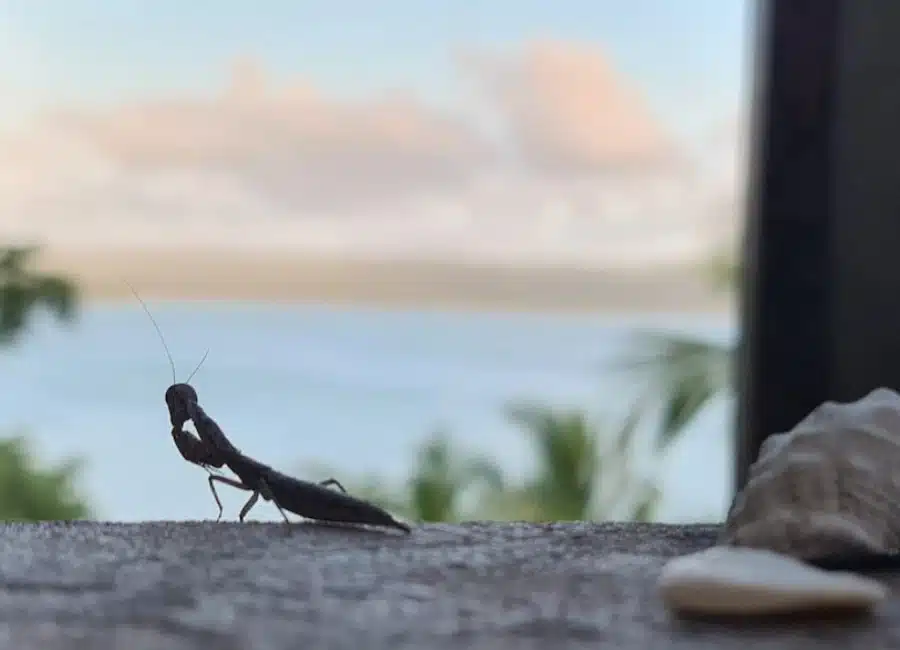
Africa's ultimate Night Sky
The starry sky here is incredibly beautiful due to the lack of light pollution, and lying in my bed at night, listening to the wind and the wild waves of the Indian Ocean in the distance, is a recipe for a wonderful night’s sleep.
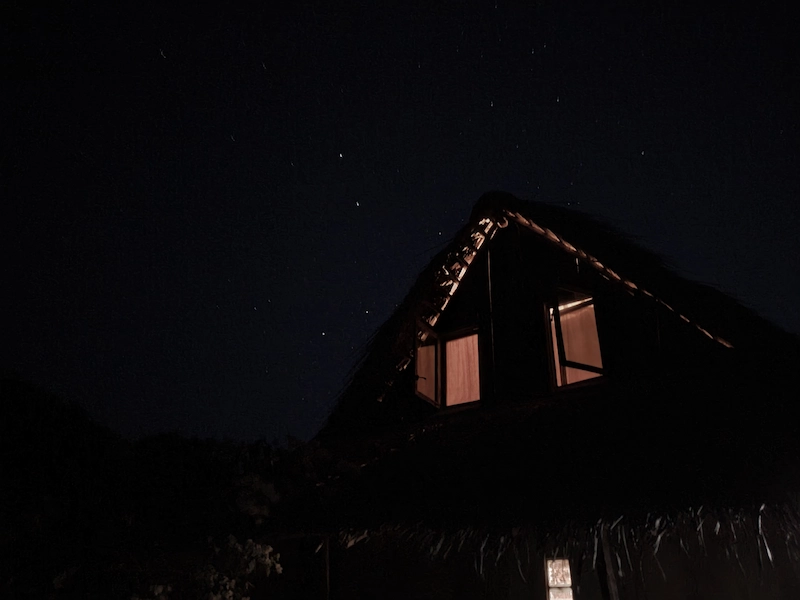
Mozambique is Safe and Relaxed
Friends are concerned about me being here all by myself in the African bush. I’m not completely alone, as guests come regularly and one of the workers stays around for the night. But no, I feel completely at ease here. Mozambique is a very safe and relaxed country, and Mozambicans are very kind and helpful people. The community is also very close-knit and small, and it’s common knowledge that I’m staying here, so people keep an eye on things. That’s a nice thought.
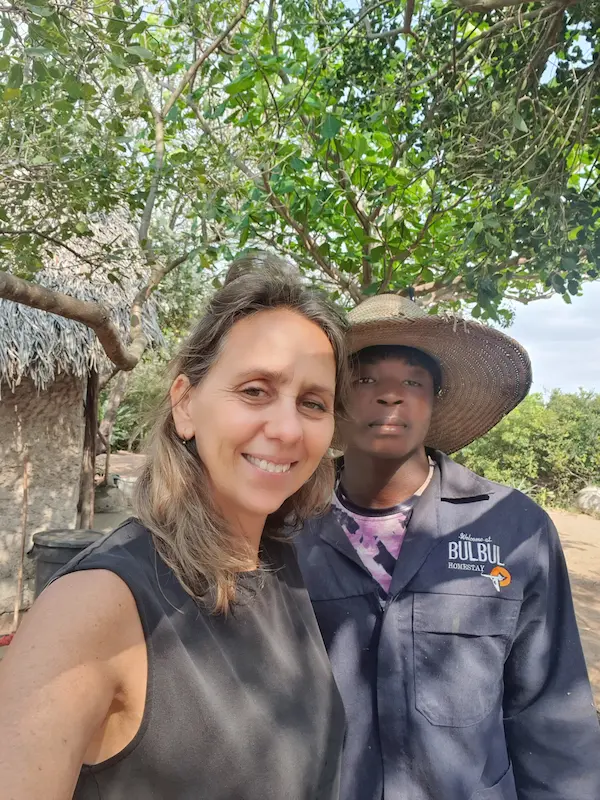
Tomorrow I will take the local bus to Vilanculos again. Back to the “city”! There, Gerry and I will welcome our first guest this week for a solo retreat, a mindful vacation combining mindfulness meditation, unique experiences, and local food. I’m really looking forward to it!
Do you also want to experience the silence and tranquillity of African nature and combine your vacation in Mozambique with unique places and homestays?
Or perhaps join us for a unique solo retreat. Please contact me. We look forward to welcoming you!
